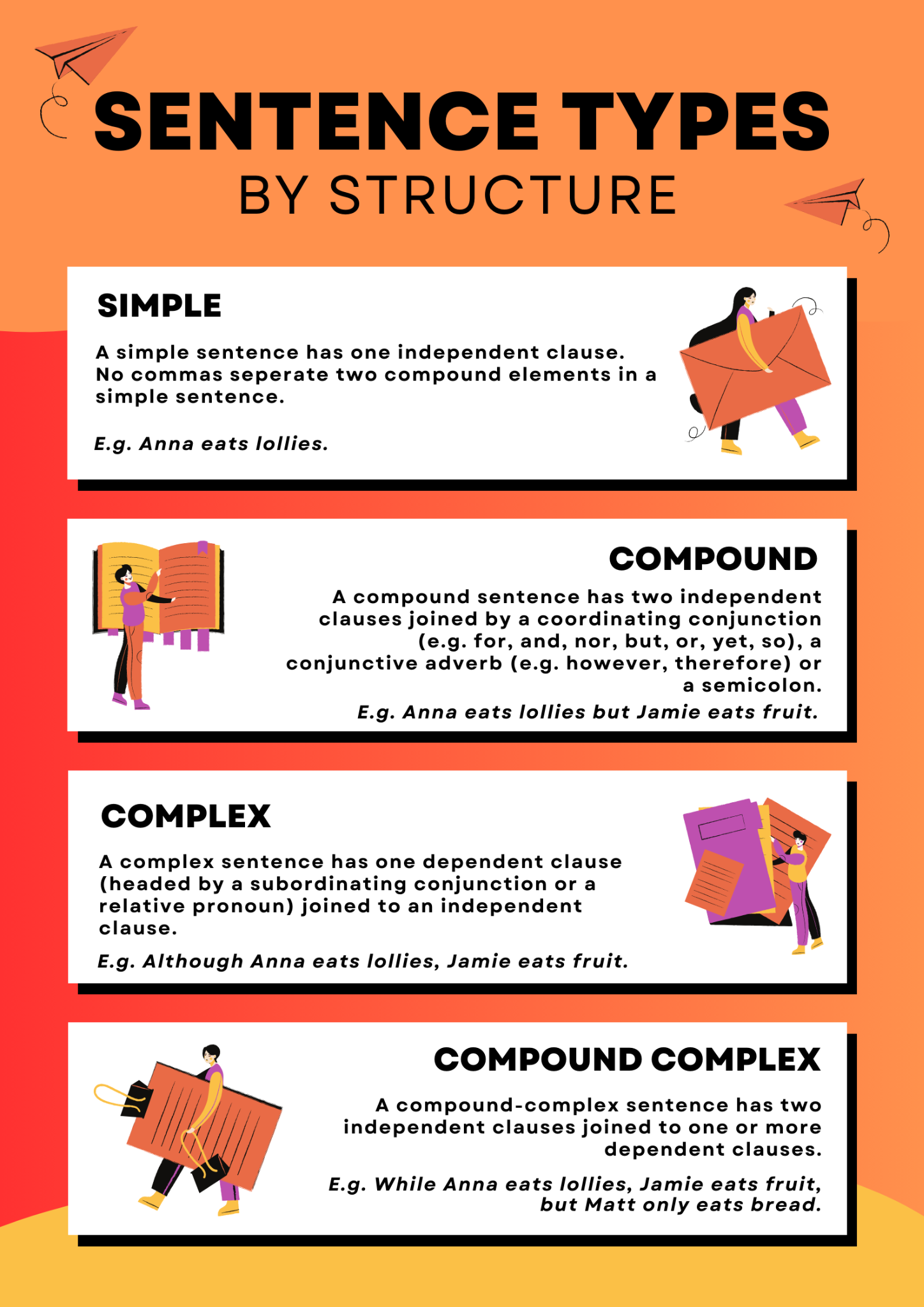




What are Simple Sentences: Step-by-Step Guide
FAQs on Simple Sentences: A Guide to Writing Simple Sentences
1. What is a simple sentence?
A simple sentence is a sentence that contains one independent clause, which means it has a subject and a predicate and expresses a complete thought on its own.
2. How can I identify a simple sentence?
A simple sentence has only one independent clause and no dependent clauses. It includes a subject and a predicate, and it expresses a complete idea. For example, "The dog barked."
3. Can a simple sentence have more than one subject or predicate?
Yes, a simple sentence can have a compound subject (e.g., "Tom and Jerry") or a compound predicate (e.g., "He sings and dances"), but it still contains only one independent clause.
4. What are some examples of simple sentences?
Examples include:
"She reads books."
"The cat sleeps."
"They went to the park."
"He plays the guitar."
5. What is the structure of a simple sentence?
A simple sentence structure typically follows the format: Subject + Predicate. The subject is who or what the sentence is about, and the predicate is the action or state of being.
6. Can simple sentences include adjectives or adverbs?
Yes, simple sentences can include adjectives (e.g., "The big dog barked.") and adverbs (e.g., "The dog barked loudly.") as long as they do not add dependent clauses.
7. How do simple sentences differ from compound and complex sentences?
Simple sentences have one independent clause, while compound sentences have two or more independent clauses joined by a conjunction, and complex sentences have one independent clause and one or more dependent clauses.
8. Are there any common mistakes to avoid with simple sentences?
Common mistakes include run-on sentences (joining two independent clauses without proper punctuation) and sentence fragments (incomplete sentences lacking a subject or predicate).
9. Can simple sentences be used in formal writing?
Yes, simple sentences are often used in formal writing for clarity and emphasis. They help in conveying clear and direct information.
10. How can I practise writing simple sentences?
You can practise writing sentences using different subjects and predicates, identifying simple sentences in reading materials, and breaking down complex sentences into simpler forms.
11. What is a compound subject?
A compound subject consists of two or more subjects joined by a conjunction, sharing the same predicate. For example, "Tom and Jerry play together."
12. What is a compound predicate?
A compound predicate consists of two or more actions or states being linked by a conjunction, all performed by the same subject. For example, "She sings and dances."
13. How can I improve my use of simple sentences in writing?
Focus on clarity and brevity. Ensure each sentence expresses one complete thought and is free from unnecessary complexity or additional clauses.
14. Can simple sentences be questions?
Yes, simple sentences can be questioned as long as they include only one independent clause. For example, "Are you coming?"
15. How do simple sentences contribute to effective communication?
Simple sentences enhance clarity by presenting ideas directly and concisely, making it easier for readers or listeners to understand the message.























